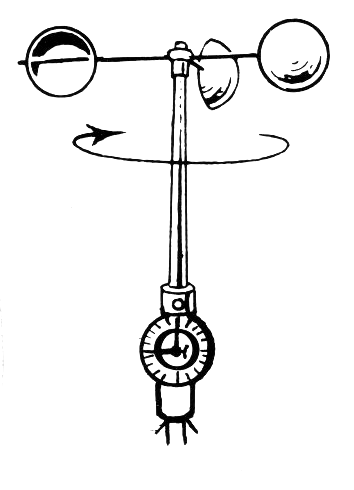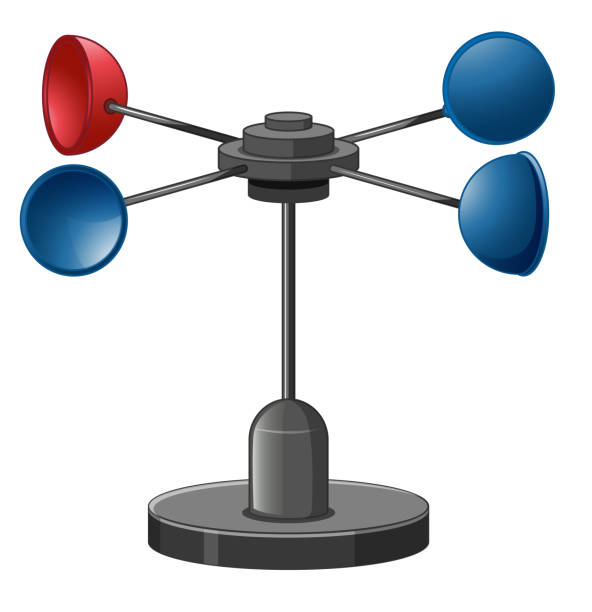Contrasting Digital and Mechanical Anemometers: Which is Right for You?
Contrasting Digital and Mechanical Anemometers: Which is Right for You?
Blog Article
Anemometers Revealed: Recognizing Their Value in Environmental Monitoring and Safety And Security Measures
The duty of anemometers in ecological tracking and precaution is frequently underestimated, yet their significance is undeniable. These tools have a lengthy background rooted in scientific query and technological advancements, progressing to become necessary tools in numerous areas. From weather forecasting to aeronautics safety, anemometers play a vital function in supplying accurate information that informs decision-making procedures and enhances general safety. Recognizing the intricacies of anemometers introduces a world of crucial understandings that are fundamental to our understanding of the environment and the measures we require to make certain safety and security.
Background of Anemometers
The development of anemometers can be mapped back to the old worlds where simple wind determining tools were first used. These very early wind dimension tools laid the structure for the development of a lot more advanced anemometers with time. One of the earliest recognized anemometers was the hemispherical cup anemometer designed by Leon Battista Alberti in the 15th century. This design contained four hemispherical mugs that collected wind power, offering a dimension of its strength based upon the rate of rotation.
Over the years, innovations in technology led to the development of even more modern-day anemometers, including ultrasonic anemometers and laser Doppler anemometers, using enhanced precision and efficiency in measuring wind speed and instructions. The background of anemometers showcases an impressive trip of technology and progression in the area of weather forecasting.
Kinds Of Anemometers
Throughout the area of weather forecasting, different sorts of anemometers have actually been developed to precisely determine wind speed and direction. The most usual type is the cup anemometer, which includes 3 or 4 cups installed on straight arms that rotate with the wind. As the cups spin, the rate at which they turn is straight proportional to the wind rate. One more extensively utilized type is the vane anemometer, which includes a tail or fin that aligns itself with the wind instructions. This placement allows the gadget to identify the wind direction. Sonic anemometers use ultrasonic signals to gauge wind speed and direction accurately. They are frequently made use of in study applications because of their high precision. Hot-wire anemometers run based on the principle that the cooling impact of wind on a warmed cord is symmetrical to the wind speed. These anemometers appropriate for determining low wind speeds with high precision. Each sort of anemometer has its strengths and is selected based upon the particular needs of the monitoring job handy.
Applications in Meteorology
Having reviewed the different kinds of anemometers made use of in meteorology for gauging wind speed and direction, it is necessary to discover their sensible applications in the area. Anemometers play a crucial duty in click resources meteorology by giving precise and real-time information on wind conditions (anemometer). Meteorologists use anemometers to monitor wind speed and direction to anticipate weather patterns, problem cautions for severe climate occasions like typhoons, hurricanes, and tornados, and analyze weather for aeronautics safety and security
In weather forecasting, anemometers help in comprehending neighborhood and regional wind patterns, which are essential for anticipating climate adjustments and figuring out climatic trends. These gadgets are likewise used in research to research microclimates, metropolitan heat islands, and air contamination dispersion. In addition, anemometers are utilized in agriculture to optimize crop monitoring methods, such as irrigation and pesticide application, based upon wind problems.
Relevance in Aviation Safety
An indispensable facet of making sure aeronautics safety and security lies in the precise surveillance of wind problems utilizing anemometers. Anemometers play a crucial duty in aeronautics by giving real-time information on wind speed and direction, assisting pilots in making notified choices during touchdown, flight, and liftoff. Solid and unforeseeable winds can substantially influence airplane operations, making it important for aeronautics authorities to count on exact wind measurements to guarantee the safety and security of guests and team.

In the vibrant atmosphere of air travel, where even small adjustments in wind find out this here rate and direction can have profound results, anemometers stand as important devices for advertising secure and my company secure air traveling.
Duty in Environmental Research
Anemometers play an essential function in environmental research study by supplying important data on wind rate and instructions. By properly measuring wind characteristics, anemometers help researchers analyze the activity of contaminants in the air, assess the influence of industrial emissions, and anticipate the spread of pollutants in the setting.


Verdict
In final thought, anemometers have actually played an important duty in environmental monitoring and security procedures. Recognizing the value of anemometers is necessary for accurately measuring wind rate and instructions, which is important for anticipating weather condition patterns, ensuring risk-free air travel operations, and carrying out environmental researches.
One of the earliest known anemometers was the hemispherical cup anemometer developed by Leon Battista Alberti in the 15th century. Over the years, advancements in modern technology led to the growth of more modern anemometers, including ultrasonic anemometers and laser Doppler anemometers, offering boosted precision and effectiveness in measuring wind rate and direction. Hot-wire anemometers operate based on the principle that the cooling result of wind on a heated wire is proportional to the wind speed. Meteorologists utilize anemometers to keep track of wind speed and instructions to anticipate weather patterns, issue warnings for extreme climate events like cyclones, hurricanes, and storms, and examine atmospheric problems for aeronautics safety.
Comprehending the relevance of anemometers is vital for accurately determining wind speed and instructions, which is crucial for anticipating weather patterns, making certain risk-free aeronautics procedures, and performing environmental researches. (anemometer)
Report this page